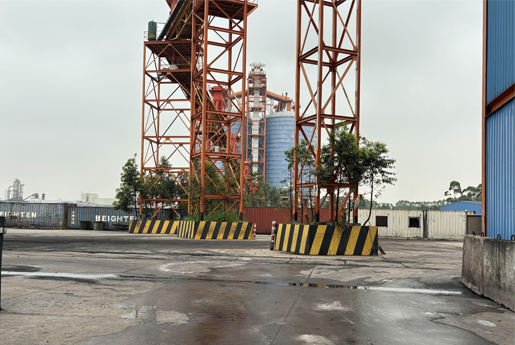Technical Specifications for Steel Silo Use
2024-06-04

Steel silos, known for their thin walls and ability to handle significant fluctuating loads, require constant monitoring during operation. This is especially crucial for port facilities where frequent material turnover puts a strain on the silo structure. Recent incidents involving silo tilting, deformation, and collapse highlight the importance of prioritizing safety measures.
Pre-Operation Procedures:
- Training: Before operating the silo, ensure all personnel (operators and management) undergo comprehensive technical training.
- Material Adherence: During operation, verify that all incoming bulk material adheres to the silo's design specifications.
Routine Inspections:
- Pre-Use Check: Conduct a meticulous inspection of all silo components prior to usage. This should include:
- Roof inlet gates
- Access doors on silo walls
- Discharge outlet gates at the silo bottom
- Roof manholes
- High-level limit indicators inside the silo
- Temperature and humidity monitoring system
- Ventilation system
- Cleaning and Maintenance:
- Remove debris from within the silo and inspect the bottom, sides, and conveyor equipment slots for damaged materials or pests.
- If pests are present (particularly in grain silos), treat the silo walls, bottom, and equipment with appropriate pesticides and perform empty silo fumigation.
- Ensure the silo meets the specific standards for the material being stored.
- Clean auxiliary equipment and verify its normal operation when empty.
- Foundation and Backfill:
- Inspect the dryness of the silo foundation or backfill slope to guarantee it meets safe material storage conditions.
- Wind Resistance (Coastal Silos):
- During typhoon warnings, ensure large coastal silos have a material level at least 50% of their capacity.
- Semi-Annual Inspection:
- Every six months, inspect the wind resistance rings on the upper silo wall.
Material Loading and Unloading Procedures:
- Centralized Loading: Ensure material is loaded through the central inlet port to promote a vertical flow into the silo.
- Upper Level Indicator: Verify the silo's upper level indicator is functioning properly.
Note: The top edge of the material pile contacting the silo wall should ideally be slightly lower (200-300 mm) than the upper eaves of the silo's straight cylinder.
- Closing Inlet Gates: After loading is complete, close the inlet gates securely.
- Sequential Unloading (Multiple Outlets):
- For silos with multiple discharge outlets, completely empty the center outlet before using the others. The recommended opening sequence for remaining outlets is:
- Open the two symmetrical outlets closest to the center first.
- Gradually open the remaining outlets towards the silo wall.
- Avoid Simultaneous Operations: Do not load and unload material simultaneously.
- Prevent Material Arching Collapse: Take measures to prevent large-scale collapse of arched or compacted material inside the silo.
By following these comprehensive guidelines, operators can ensure the safe and efficient operation of steel plate silos.
